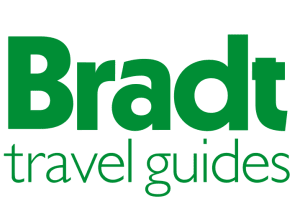DISCOVER TANZANIA
A Guide to Practical Questions about Mount Kilimanjaro Hikes.
If climbing Mount Kilimanjaro in Tanzania is one of your priorities this year, then this blog is definitely for you. Here are is an elaborate guide to practical questions about hikes on Mount Kilimanjaro.
What training do you think is most beneficial when climbing Mount Kilimanjaro?
You will need to do a lot of strength training, goblet squats, Kettlebell Deadlift, Stretching, Hanging Knee raises and lunges, and plenty of walking with weighted back pack and poles. You will want to make sure that you can go for big distances, and not forgetting the descend to the base of the mountain. These particular workouts will tone and develop the muscles that you utilize while hiking on the mountain, giving you more speed, agility, and endurance to appreciate the wonders of nature.
What did you bring and not need, wish you hadn’t packed?
I felt we had more clothes than we needed. Also, too many snacks and drinks mixes. The food was very plentiful and water tasted good.
What are you so glad you brought?
You will definitely need to keep yourself entertained when you are not hiking on the mountain; so, carry a pair of ear buds, have a good music or audio book that you love listening to. Also, given that you will be involved in strenuous hiking in some parts of the mountain, you are bound to get your hands dirty, so a good portable nail brush will definitely come in handy.
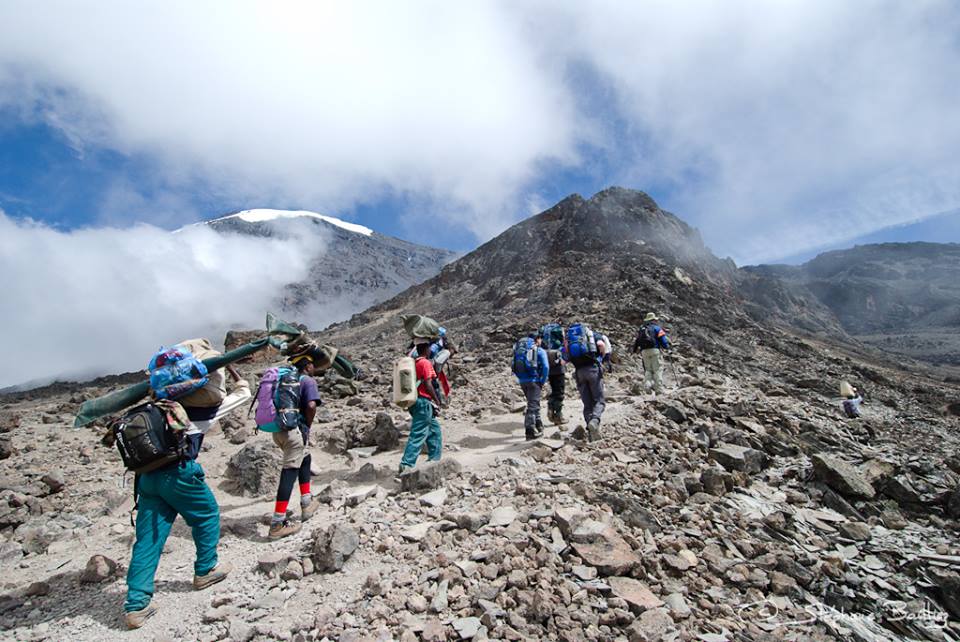
Can I take my cell phone on the mountain? Is there service on the mountain? How do I recharge my battery?
When hiking Mount Kilimanjaro, it is important to travel light and drop the unnecessary/excess luggage. Yes! You can most definitely take your phone with you when you are climbing the mountain. Although there is no service on all parts of the mountain, you will find some good spots with great service on the mountain. I would recommend that you ask your porters because they know all the great spots with service on the mountain. Also, carrying a good power bank will definitely come in handy through out your hike on the mountain. There are some charging spots that you will find at some shelters that are solar powered.
Is it a must to carry a camera to take photos on the mountain?
Taking a camera is not really a must have during your hike on Mount Kilimanjaro as your phone camera can do the job just perfectly. Some phone brands such as the iPhone 12 pro and up, as well as the Samsung s22 have really good cameras and can take great photos like any professional camera.
Do women use the shewee at night and is it a must have?
Having a shewee is not really a must have, as there are public toilets at each camp stop. However, if you are not comfortable with using the public toilets for your short calls, you can pack your shewee and simply ask your porter to get you a private area where you can help yourself.
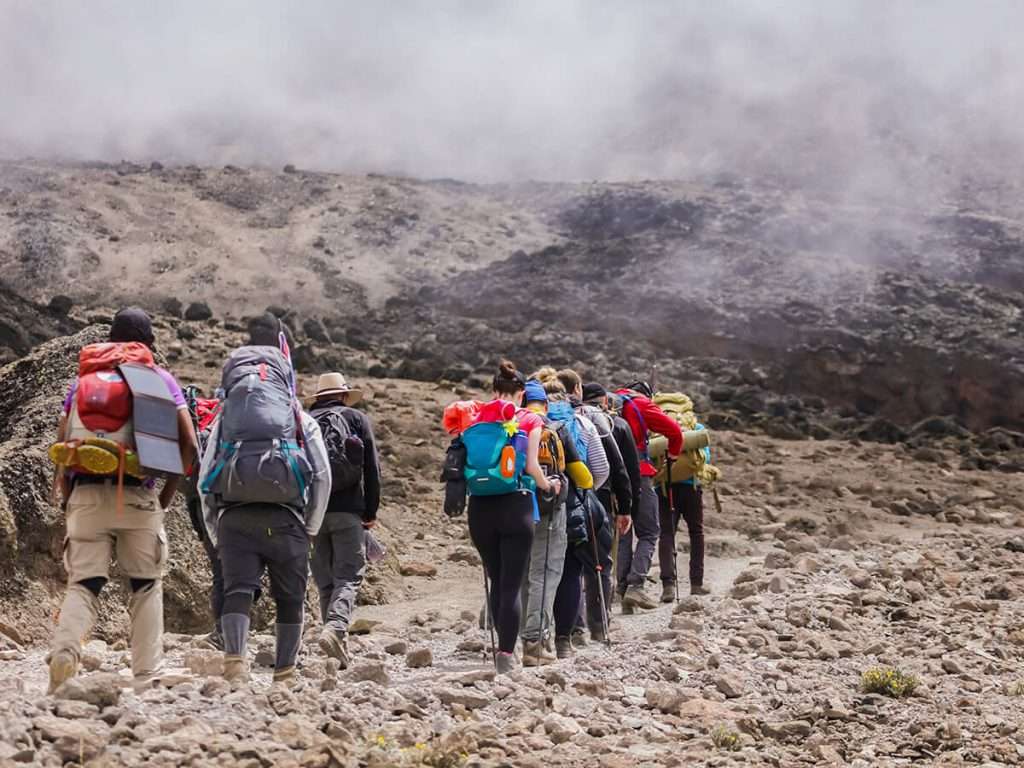
How much did I tip at the end of the trip?
When it comes to tipping, it really goes a long way if you tip each guide, cook and porter individually. It will also help if you can set aside smaller denominations of tipping fees in envelopes. Given that there is a limit to how much money you can take with you on your hike up the mountain, you can always ask your tour operator to hold onto your tip money for you and just find it with your driver guide once you touch base at the end of your hike on Mount Kilimanjaro.
You can always tip your crew at the end of your hike and as a guide, you can use the following as a tipping guide; Guide $20 per day, assistant guide and cook $15 per day, and porters $5-10 per day. Don’t hesitate to tip more than the above rates in case you are feeling generous.
How many days prior should I arrive to adjust to time change?
We recommend you arrive at least 2 days prior to your hiking trip on the mountain. Hiking Mount Kilimanjaro is no walk over, so you will need to get plenty of rest before commencing your hike on the mountain and also adjust to the time change in Tanzania.
What is climbing Kilimanjaro really like?
Climbing Kilimanjaro in a week is equivalent to trekking from the Equator to the North Pole. It’s also a really bonding experience that demands careful planning; and is much better and safer with a reputable tour operator organizing the entire tour for you.
How do I get to Mt Kilimanjaro?
There are three major airport entry points into Tanzania:
- Dar es Salaam (DAR)
- Zanzibar (ZNZ)
- Kilimanjaro Airport (JRO)
The latter is the most convenient for Kilimanjaro, being just 42 kilometers from Moshi and 50 kilometers from Arusha. In addition to flights to Tanzania, consider flights to Nairobi in Kenya, which is only a five-hour shuttle bus journey or a one-hour aircraft travel from Arusha. However, if you want to travel to Kenya, you may require a multiple-entry Kenya visa (for example, if you’re flying out of Kenya and staying in Tanzania for more than a fortnight), which may cost up to $122. This would decrease or possibly erase whatever airfare savings you may have made.
You should evaluate the entire vacation when determining which flights to buy. For example, if you want to spend a few days in Zanzibar after the climb, you should buy one-way tickets from your house to Kilimanjaro Airport for the climb, from there to Zanzibar after the climb, and then from Zanzibar back home.
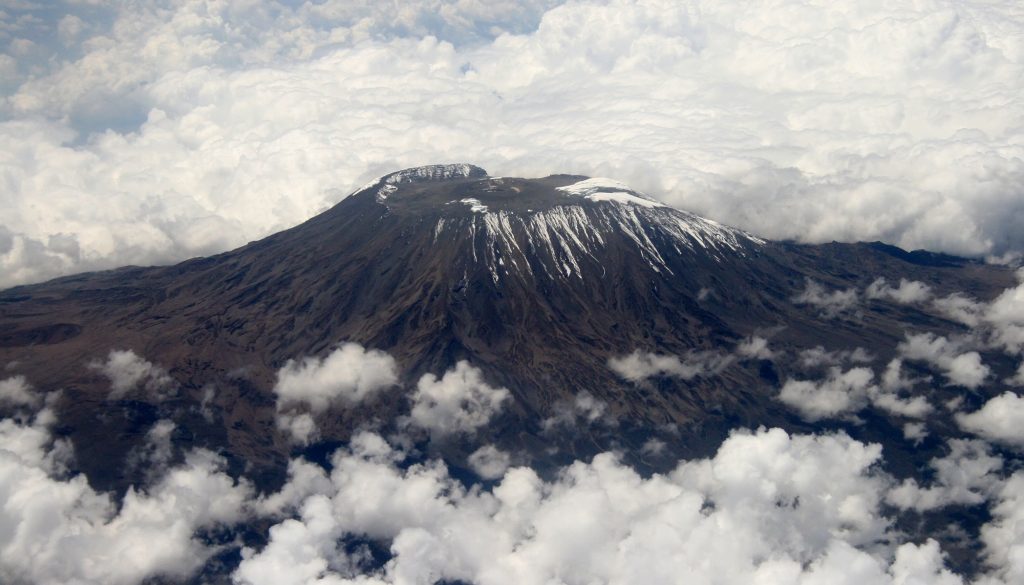
How many days early should I arrive?
We recommend arriving a day ahead of time. This will allow you to unwind, meet your fellow trekkers, and receive a thorough briefing before the climb begins. More significantly, if your aircraft is delayed or your luggage goes missing, there is enough leeway room to ensure that your climb is not derailed. Seriously, this extra day is a fantastic idea, especially given the current state of post-pandemic airline operations.
Having saying that, we appreciate that getting to Kilimanjaro may be difficult. So we’ll do our best to accommodate your arrival schedule for example, if you come late at night the day before the climb, we’ll still be there to pick you up!
Do I need a visa to travel to Tanzania?
Yes, most international visitors to Tanzania require a visa. Citizens of the United States, Canada, the United Kingdom, and the majority of European countries can get a visa upon arrival at the airport. The fee is $100 for US passport holders and $50 for everyone else. However, US citizens are granted a lengthier visa.
If you are a citizen of another country, please check with your embassy to see if you may receive a visa upon arrival – or if one is even required. Certain African people, for example, are exempt from requiring a visa to enter Tanzania. You must also have a passport that is valid for at least six months after your departure date.
What vaccinations do I need before climbing Mount Kilimanjaro?
Tanzania has no special vaccination requirements for entrance. However, if you are traveling from a country where yellow fever is a danger, the Tanzanian government needs confirmation of yellow fever immunization upon arrival.
While not required, we recommend speaking with your doctor about receiving the following vaccines (which are typical in industrialized countries): Hepatitis A and B, typhoid, yellow fever, tetanus, polio, MMR for measles, mumps, and rubella, as well as meningococcal meningitis.
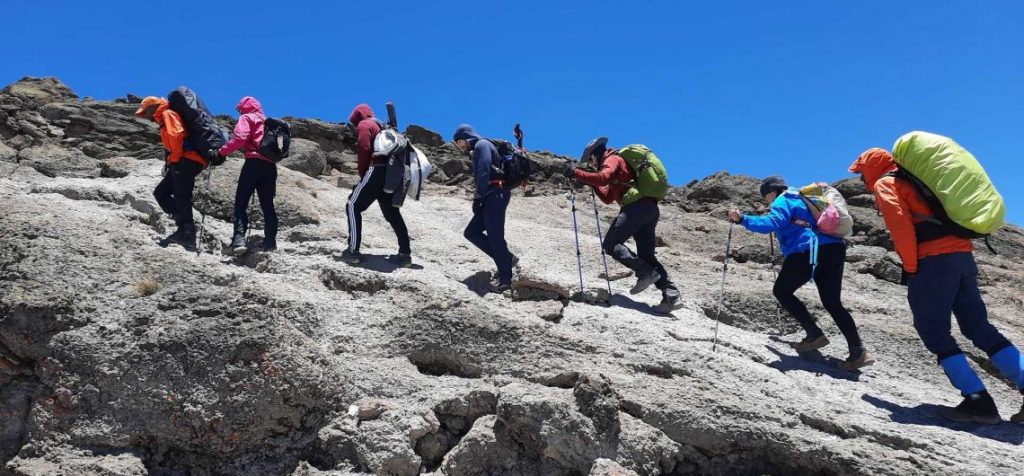
Which is the best route to use when climbing Mount Kilimanjaro?
There are seven distinct Kilimanjaro ascent routes. The eight-day Lemosho, seven-day Machame, and nine-day Northern Circuit treks are our recommendations. These routes provide the ideal blend of high success rate and scenic beauty.
Is Kilimanjaro a technical mountain?
Kilimanjaro does not need any technical climbing knowledge or equipment. In many respects, this makes it the most accessible of the Seven Summits. Any reasonably fit individual can climb the peak. That being said, it will be one of the most challenging things most individuals will ever undertake in their life! As we mention in Kilimanjaro versus Everest Base Camp, we believe it is much more difficult than walking to Everest Base Camp!
When is the best time to climb Mount Kilimanjaro?
Kilimanjaro can be climbed all year. However, the greatest months to climb are July to October and December to February, as these are the hottest and driest months. The busiest months on the mountain are usually July, August, and September. The full moon is another important thing to consider. Climbing Kilimanjaro on a clear evening with the moon as your guide rather than a flashlight is an extraordinary experience. Imagine watching the glaciers shine in the night – breathtaking!
What kind of food is prepared?
Every day, your cook and his assistant will prepare fresh, locally produced, delicious and nutritious meals for you. Our meals have been meticulously crafted to guarantee that the food is delicious, simple to digest, and full of energy. Along the journey, expect fresh vegetables, fruits, meat, nuts, and snacks, as well as clean water.
Rice, potatoes, and pasta are the main carbs in the meals, along with some meat. Every meal includes fresh fruits and vegetables. Most meals will also include a selection of hot beverages, such as instant coffee, tea, and hot chocolate. You might want to include some extra comfort foods like sweets, gum, chocolate, health bars, and powdered energy drinks.
Can you cater for special diets?
Do you have any unique menu requests? Not to worry. Vegetarian and vegan diets, as well as gluten-free diets, are all possible. Please contact us if you have a particular diet to discuss what we can and cannot do.
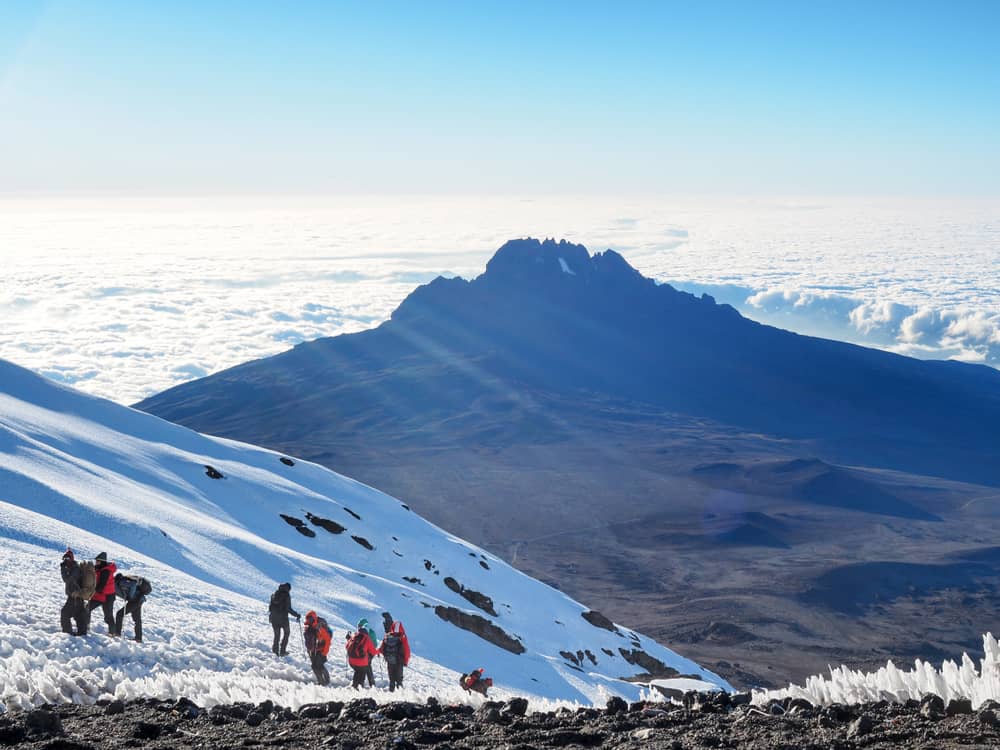
How do I shower and use the loo?
This is an outdoor adventure journey in Africa’s wilderness. On the mountain, there are no showers. Warm water will be provided in a bowl for you to wash your face and hands. You can bring wet wipes for the rest. We built up a private bathroom tent with a plastic toilet at each campground. There are also basic, hole-in-the-ground public restrooms (which are typically filthy and should be avoided). If you need to use the restroom while hiking, look for a space behind a tree or rock. However, you will need a little baggie to put soiled toilet paper in, which you will then transport to camp and dispose of in a container.
What is the climate like on Mount Kilimanjaro?
Due to the significant elevation rise on a Kilimanjaro climb, you may encounter a variety of weather conditions, ranging from 30° C (86° F) on the plains surrounding Kilimanjaro to -7 to -29° C (20° to -20° F) at the summit. So make sure you’re prepared and pack appropriate attire! More information may be found in the Mount Kilimanjaro climate.
What is accommodation like on Mount Kilimanjaro?

We stay in a pleasant resort in Moshi on the day before the hike (arrival day) and the day after the trek (departure day). It features beautiful vistas as well as beautiful rooms and conveniences. You sleep in three-person, four-season dome-style mountain tents, two each tent, during the ascent. If you want your own tent, you must pay a single-person premium. Our tents are contemporary, with an outer flysheet and huge vestibules for storing your gear throughout the night.
How many people are in a typical hiking group?
A typical hiking group on Mount Kilimanjaro can comprise a maximum of 12 members and a minimum of 6-10 members. Each group has its porters, chiefs and guide.
Can I join a group as a single climber?
Yes, we enjoy it when lone travelers join us on a tour! We’ll put you in a group with other travelers who will quickly become your new friends. There is nothing more bonding than being ‘stuck’ together for a week on a mountain in Africa! A single addition of US$200 is required if you want to bring your own tent. If you like, we will try to pair you with another person in a tent if there is someone available to share with you in your climb group.
How do I prepare physically for Kilimanjaro?
Kilimanjaro is not for the faint of heart. Too many individuals try this and fail to reach the top! We recommend that you begin your physical training at least two or three months before the climb, depending on your present fitness level.
What luggage should I bring?
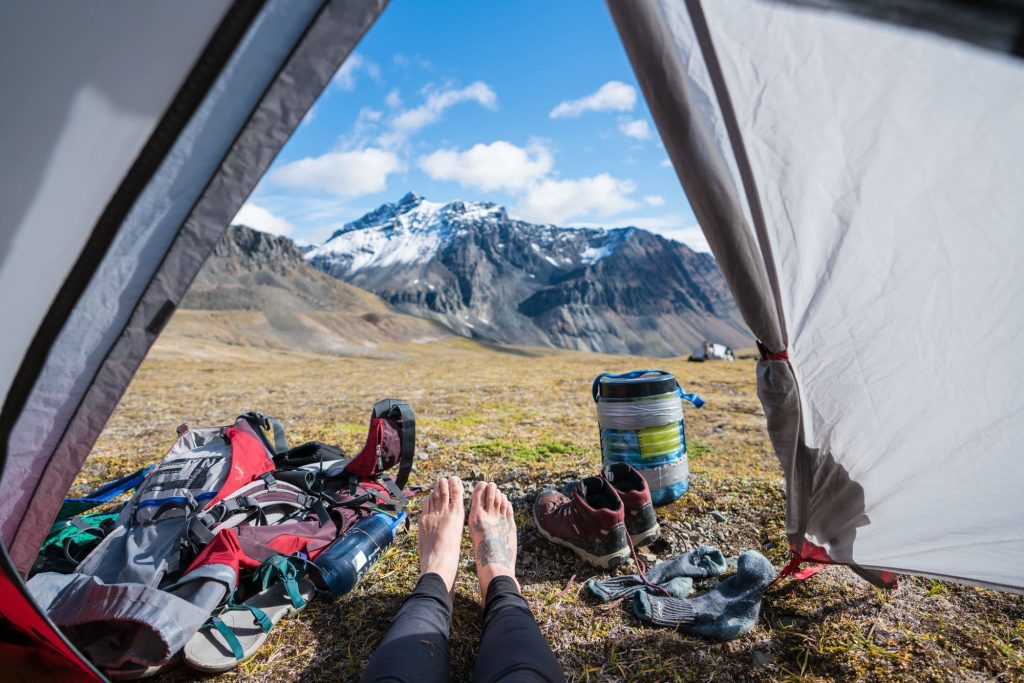
When climbing Mount Kilimanjaro, you will need at least two bags:
- One is a backpack that you will carry on your back.
- The second bag is your duffel bag, which is carried for you by a porter.
The backpack, which serves as your carry-on luggage, will hold your water and lunch for each day, as well as snacks, rain gear, and a camera. This backpack should hold between 30 and 50 liters.
All of your additional clothing, equipment, and toiletries will be stored in your duffel bag. It’s a good idea to pack a third, compact bag to keep anything you don’t want to haul up the mountain. This may be safely left at your hotel.
How much luggage can I bring?
When fully loaded, keep your duffel bag to 14 kilograms (31 pounds) to lighten the load on the porters. Baggage should be spherical and squashy rather than a hard suitcase. Be aware that baggage limitations on domestic flights are frequently 15 to 20 kg (33 to 44 pounds) per person, so prepare carefully.
For your personal benefit, aim to keep your daily bag under 9 kilograms (20 pounds). If you need help selecting a backpack for high-altitude hiking, please see How to Choose a Backpack for High-Altitude hiking.
Is climbing Kilimanjaro safe?
On these massive mountains, there are always fatalities. And Kilimanjaro is no exception. Altitude sickness is the leading cause of mortality on Kilimanjaro. This occurs when you climb the mountain too rapidly, not allowing your body adequate time to acclimate.
Having said that, Kilimanjaro is a safe climb provided you travel with a reputable tour company and use one of the routes we recommend. Our local guides and staff have been educated to keep you safe and can assist climbers who become unwell or wounded. On every Kilimanjaro climb, your health and well-being are our first priority.
What is altitude sickness?
Altitude sickness occurs when your body is unable to adjust quickly enough to the lower oxygen intake per breath produced by the lower air pressure at a higher altitude. Climbers frequently make the mistake of ascending Kilimanjaro too rapidly. But don’t worry, getting slight altitude sickness on Kilimanjaro is very typical. As a result, it’s very probable that you’ll get altitude sickness when climbing Kilimanjaro. Only when someone has moderate to severe altitude sickness do you have a serious problem.
It is important to note that age, gender, or physical fitness have no bearing on your risk of altitude sickness. And just because you haven’t had it before doesn’t mean you won’t have it again. This is why we constantly urge clients to take as many measures as possible to avoid altitude sickness.
What if I get injured or sick on the climb?
The Kilimanjaro National Park charges all climbers a rescue fee, which is included in our package price. If you are unable to continue the climb due to injury or illness, the guides and porters would happily assist you on the way down.
We will not be able to repay you for the days you missed on the mountain if you come down and are transported back to the lodge early. Furthermore, just to be safe, we need all of our visitors to acquire specific adventure travel insurance that covers any potential medical expenditures and evacuation charges.

